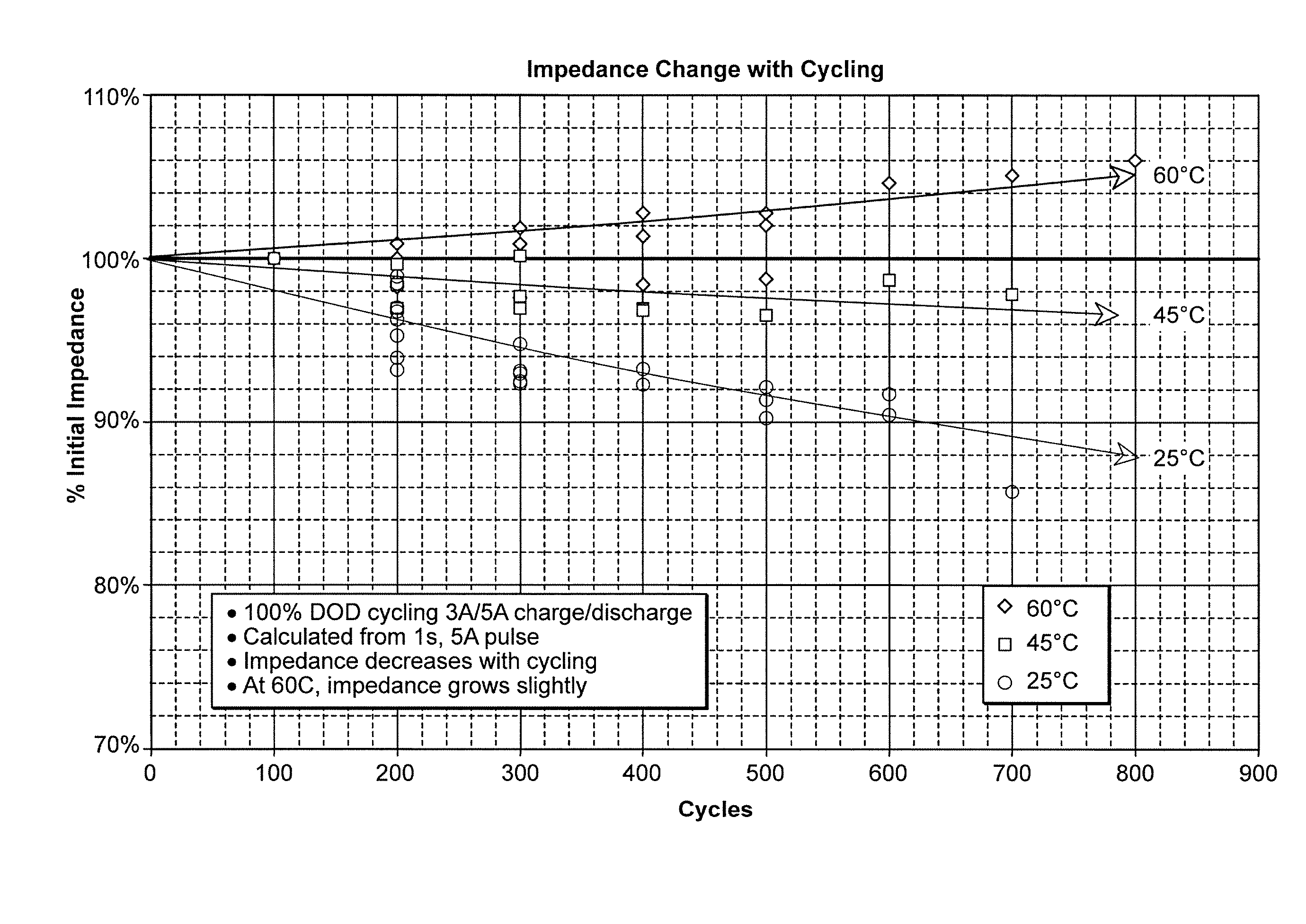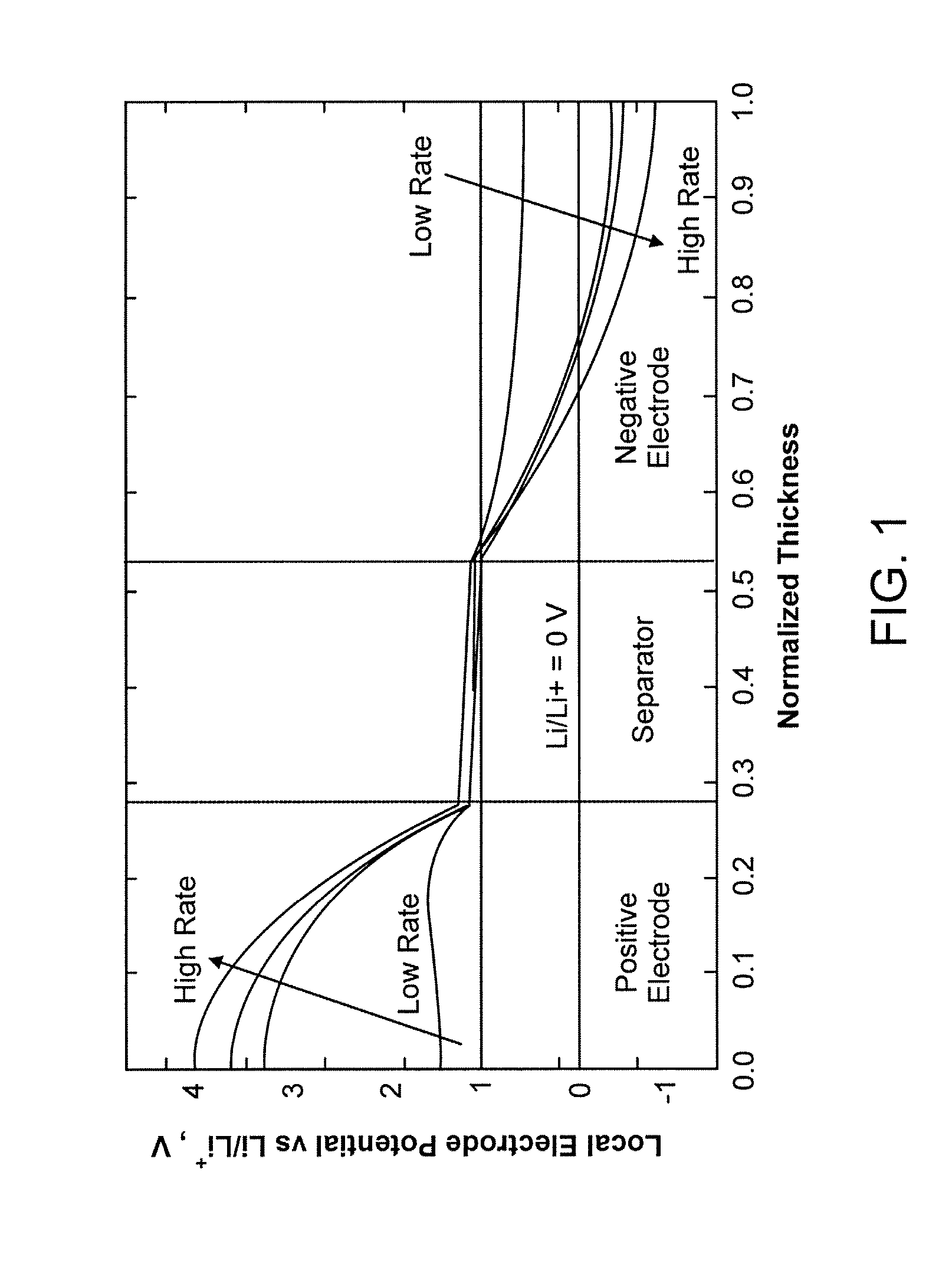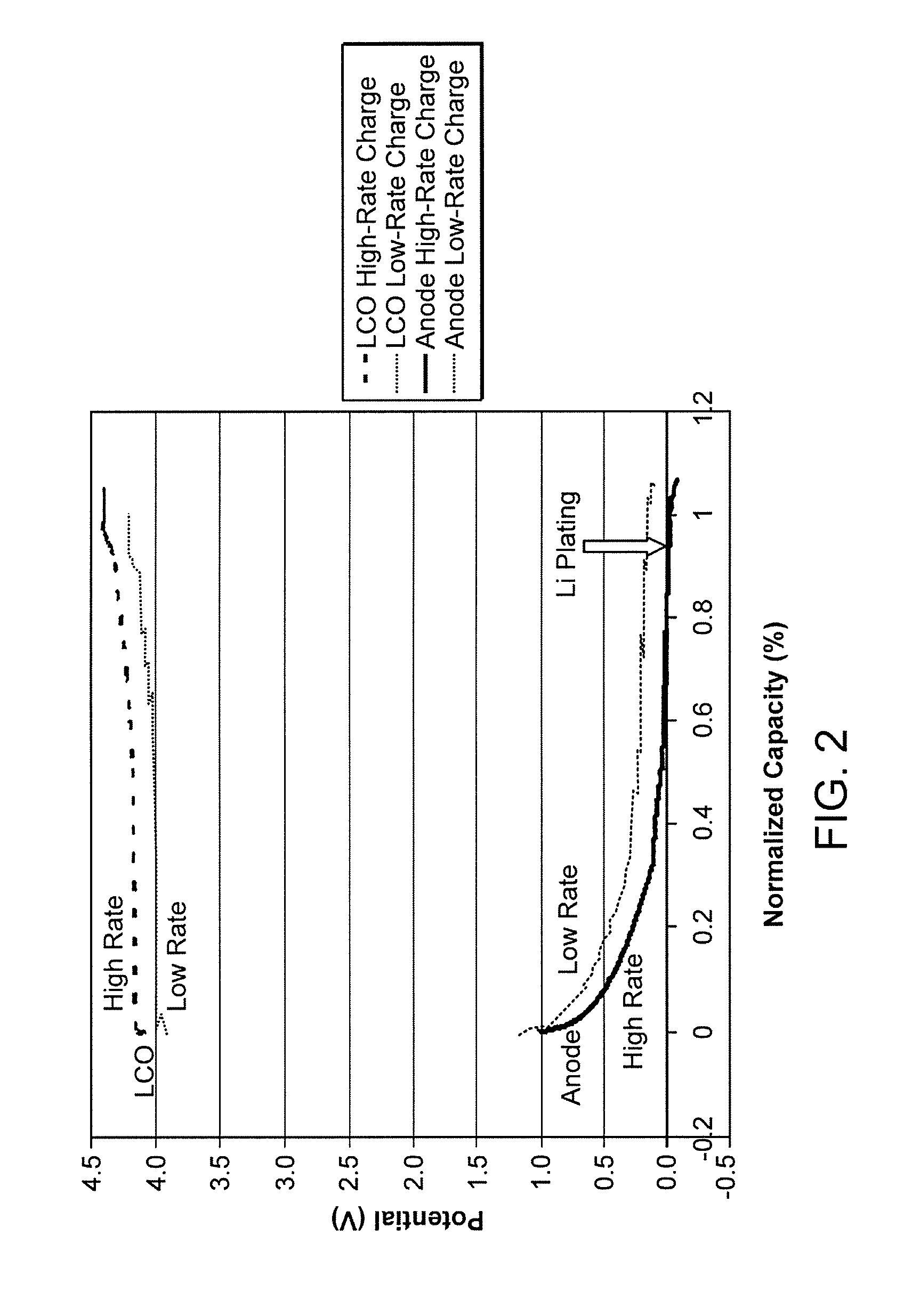Lithium secondary cell with high charge and discharge rate capability and low impedance growth
a secondary cell, high charge and discharge rate technology, applied in cell components, electrochemical generators, transportation and packaging, etc., can solve the problems of reducing the capacity of secondary cells, affecting the reliability and safety of secondary cells, and observing capacity fade during cycling, etc., to achieve high charge and discharge rate, high energy and power capacity, and low cost
- Summary
- Abstract
- Description
- Claims
- Application Information
AI Technical Summary
Benefits of technology
Problems solved by technology
Method used
Image
Examples
example 1
Preparation of Lithium-Ion Secondary Cells
[0139] To prepare doped LiFePO4, iron oxalate, lithium carbonate, ammonium dihydrogen phosphate and zirconium ethoxide are mixed in a 2:1:2:0.02 molar ratio in a plastic milling jar containing grinding media and acetone for 72 hours. Heating and stirring the slurry to the boiling point of acetone removed the acetone. The dried powder is heated under an inert atmosphere at 1° C. per minute to 350° C. and held there for 10 hours, followed by ramping at 5 degrees per minute to 600° C. and holding there for 20 hours. The finished product is milled and then stored in the absence of water.
[0140] The positive electrode slurry is prepared by dissolving 7 g of PVDF-HFP copolymer commercially available as Kynar® 2801 from AtoFina in 250 g of NMP and dispersing in the resulting solution a dry mixture of 88 g of doped LiFeO4 prepared as described above and 5 g of conductive carbon (Super P or Ensaco). The paste is homogenized in a planetary mixer or b...
example 2
Preparation of a Li-Ion Cell
[0152] A positive electrode was prepared as described in Example 1, the only exception being that acetone was used instead of NMP as a casting solvent to prepare a positive electrode paste. A cylindrical Li-ion battery was assembled following the steps and procedures described in Example 1. The positive electrode material removed from the current collector foil after calendering had a porosity of 27 vol.-% and specific surface area of 13 m2 / g.
example 3
Preparation of a Li-Ion Cell
[0153] A positive electrode was prepared as described in Example 1, the only exception being that an acetone-NMP mixture in the volumetric ratio of 90 to 1 was used instead of pure NMP as a casting solvent to prepare a positive electrode paste. A cylindrical Li-ion battery was assembled following the steps and procedures described in Example 1.
PUM
| Property | Measurement | Unit |
|---|---|---|
| temperature | aaaaa | aaaaa |
| specific surface area | aaaaa | aaaaa |
| temperatures | aaaaa | aaaaa |
Abstract
Description
Claims
Application Information
 Login to View More
Login to View More - R&D
- Intellectual Property
- Life Sciences
- Materials
- Tech Scout
- Unparalleled Data Quality
- Higher Quality Content
- 60% Fewer Hallucinations
Browse by: Latest US Patents, China's latest patents, Technical Efficacy Thesaurus, Application Domain, Technology Topic, Popular Technical Reports.
© 2025 PatSnap. All rights reserved.Legal|Privacy policy|Modern Slavery Act Transparency Statement|Sitemap|About US| Contact US: help@patsnap.com



